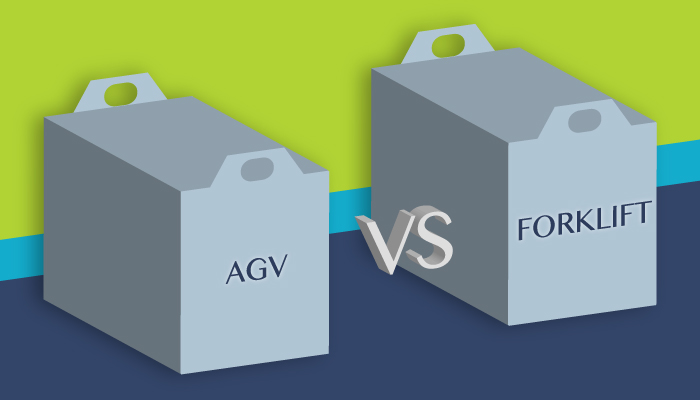We use cookies to make your experience better. To comply with the new e-Privacy directive, we need to ask for your consent to set the cookies. Learn more.
Preventative Maintenance for AGV Batteries
Automatic guided vehicles (or automated guided vehicles, depending on who you ask) are touted as the future of material handling. They're driverless forklifts or carts that follow paths through floor implants, pre-programmed routes, or by using cameras or laser guidance.
As advanced as AGV technology has become in recent years, one thing about these devices will be familiar to anyone who has worked with traditional electric forklifts: the battery.

That's why users of electric forklifts will already be familiar with the maintenance tasks that can keep AGV batteries running as efficiently as possible. They're the same tasks that battery room operators already perform for forklift batteries. In essence, maintenance for industrial lead-acid batteries includes three important tasks: watering, washing, and equalizing.
- Flooded lead-acid AGV batteries lose a little bit of water during regular use and charging. During discharge, batteries heat up, and some of the water in the electrolyte evaporates. Charging breaks water down into its composite parts, releasing small amounts of oxygen and hydrogen. The result is that electrolyte levels diminish. When plates are exposed to the air, they begin to oxidize, permanently losing capacity. Luckily, there's a simple solution.
After (and only after) charging an AGV battery, staff should check the water level. If it's low, they should add de-ionized water with a dedicated Water Cart and Water Gun. Alternately, facilities could install an Integrated Watering System directly into their battery racks.
- Lead-acid AGV batteries lose some electrolyte during normal operation. Over time, a corrosive, conductive sludge forms on battery cases. This substance causes low-level self-discharge and can corrode terminals, permanently damaging batteries.At least once a month, battery users should wipe down AGV batteries with a neutralizing agent such as AcidSafe Liquid. Twice a year, or more, depending on usage, thoroughly wash AGV batteries with an automated Battery Wash Cabinet to safely reclaim the used wash water.
- Every 5-10 charging cycles, AGV batteries require an equalizing charge. This is essentially a purposeful overcharge. Equalization causes gassing and bubbling, effectively restoring all cells to an equal voltage.Even more importantly, equalizing AGV batteries thoroughly mixes the electrolyte. Without this important maintenance task, water and acid might separate within cells, a process known as stratification. Pure acid can damage battery plates, so it's crucial to prevent stratification with regular equalization charges.
Today's lead-acid AGV batteries can keep automated equipment running throughout an entire shift, but only if they're properly cared for. Be sure to follow the manufacturer's maintenance instructions.
An AGV may be totally automated, but its battery isn't. Take care of AGV batteries to get the most out of a significant investment.
References:
“Online Training Program, Module 1: What is an AGV?” MHI. MHI, 2012. PDF. 29 Nov. 2016.
“Powered Industrial Trucks (Forklift) - Types & Fundamentals: Electric.” OSHA. Occupational Safety & Health Administration, United States Department of Labor, n.d. Web. 29 Nov. 2016.
Weiss, Scott and Mark Waycaster. “Forklift Battery and Charger Preventative Maintenance Programs - ‘A Wise Investment.’” WarehouseIQ. WarehouseIQ, 2 June 2011. Web. 29 Nov. 2016.
